Y6 Settings across Genres (project)
£3.00
KS2 National Curriculum:
✓ Exploring settings from a writer’s perspective
✓ Reporting on how setting conventions vary across texts
✓ Identifying what makes each genre distinct
✓ Structuring findings into a written report
This project looks at the settings in a variety of different genres including science fiction, pirate stories, traditional stories and fantasy stories. It also looks at real vs imaginary settings.
There is a five-minute evidence-based CPD activity at the end of this lesson which will develop classroom teachers’ skill set. This CPD consists of a research extract on self-regulation with a five-minute activity based on this extract.
Description
These evidence-based learning (EBL) lessons are based on classroom practice that has been proven, by research, to maximise thinking, learning and attainment. From an extensive review of educational research, we identified the eight key classroom thinking and learning skills that were common across these research papers. We named these eight key skills “EBL skills”.
EBL skills have been proven by research to maximise learning because they combine the most productive thinking skills with the most effective learning behaviours. Each of our evidence-based learning lessons uses the English curriculum as a framework through which the eight EBL skills are delivered.
Teachers also have the opportunity to add to their own skill set or refresh their existing skills with our five-minute CPD activity, based on one of the EBL skills used in this lesson.
The skills in bold below are the EBL skills developed in this Familiar Settings lesson. Click on each skill to learn more about that skill.
- Collaboration
- Thinking Skills
- Peer Assessment
- Peer Teaching
- Self-Assessment
- Metacognition
- Self-Regulation
- Independent Learning
1 review for Y6 Settings across Genres (project)
Only logged in customers who have purchased this product may leave a review.
Related products
-
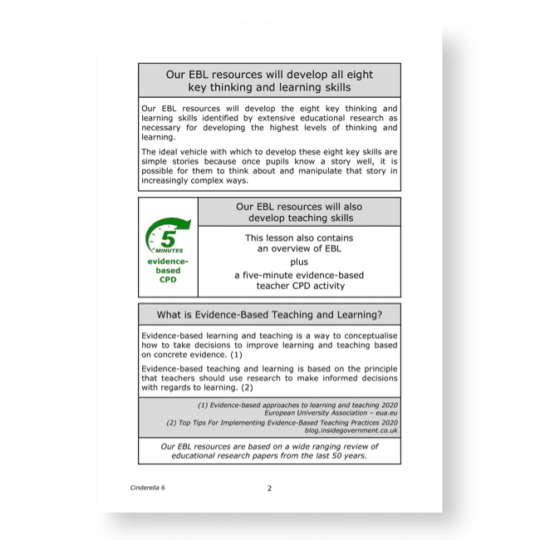
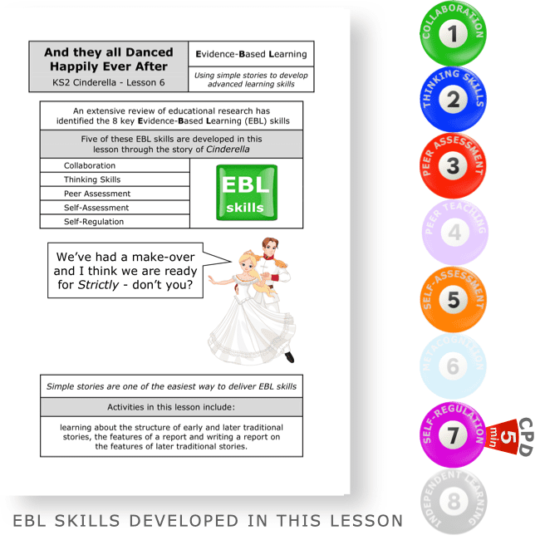
And they all Danced Happily Ever After
£3.00 Add to basket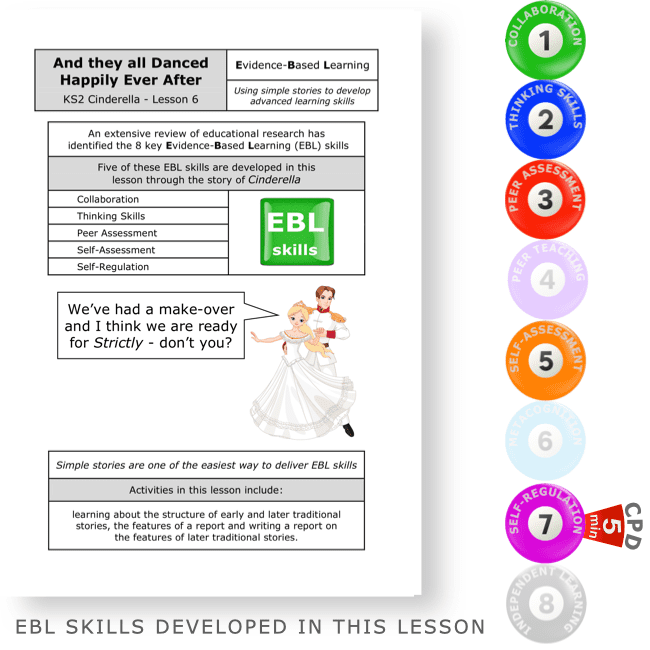 £3.00Add to basket
£3.00Add to basketActivities in this lesson include learning about the structure of early and later traditional stories, the features of a report, and writing a report on the features of later traditional stories.
There is a five-minute evidence-based CPD activity at the end of this lesson which will develop classroom teachers’ skill set. This CPD consists of a research extract on self-regulation with a five-minute activity based on this extract.
VIEW -
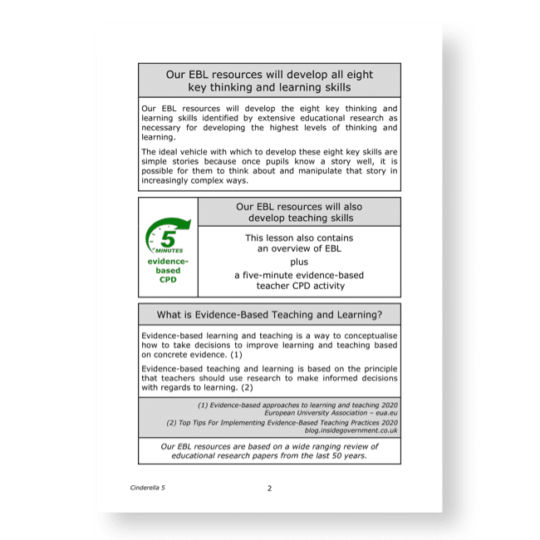
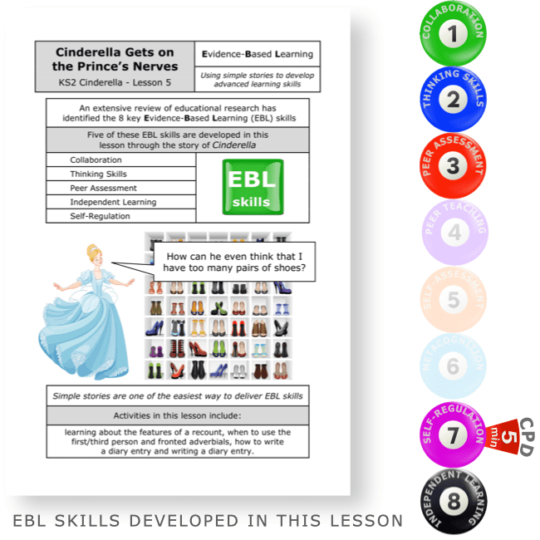
Cinderella Gets on the Prince’s Nerves
£3.00 Add to basket £3.00Add to basket
£3.00Add to basketActivities in this lesson include learning about the features of a recount, when to use the first/third person and fronted adverbials, how to write a diary entry and writing a diary entry.
There is a five-minute evidence-based CPD activity at the end of this lesson which will develop classroom teachers’ skill set. This CPD consists of a research extract on self-regulation with a five-minute activity based on this extract.
VIEW -
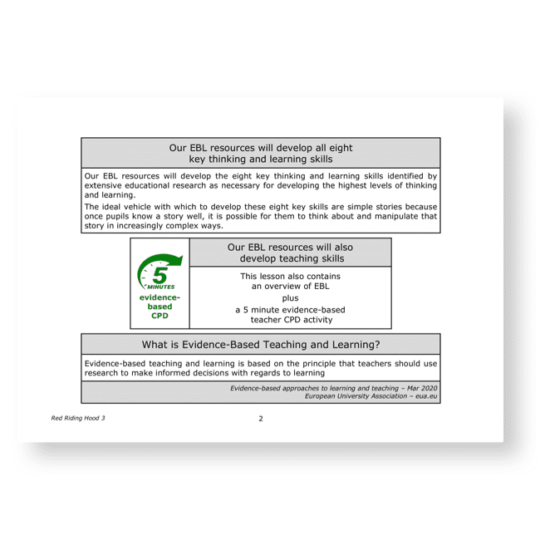
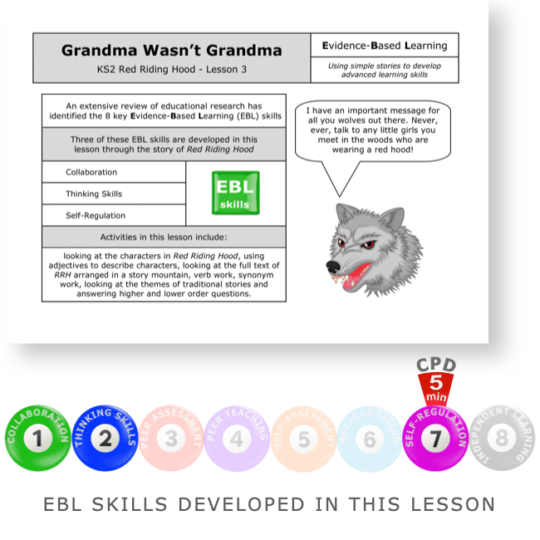
Grandma Wasn’t Grandma
£3.00 Add to basket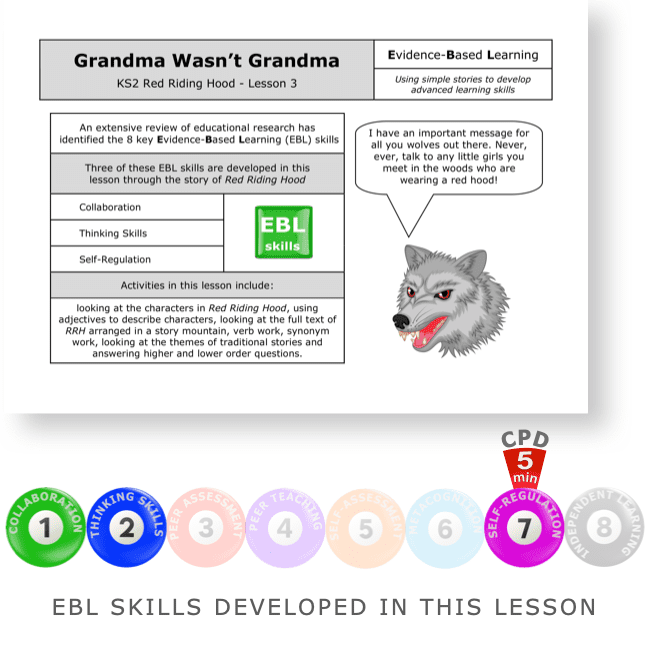 £3.00Add to basket
£3.00Add to basketActivities in this lesson include looking at the characters in Red Riding Hood, using adjectives to describe characters, looking at the full text of Red Riding Hood arranged in a story mountain, verb work, synonym work, looking at the themes of traditional stories and answering higher and lower order questions.
There is a five-minute evidence-based CPD activity at the end of this lesson which will develop classroom teachers’ skill set. This CPD consists of a research extract on self-regulation with a five-minute activity based on this extract.
VIEW -
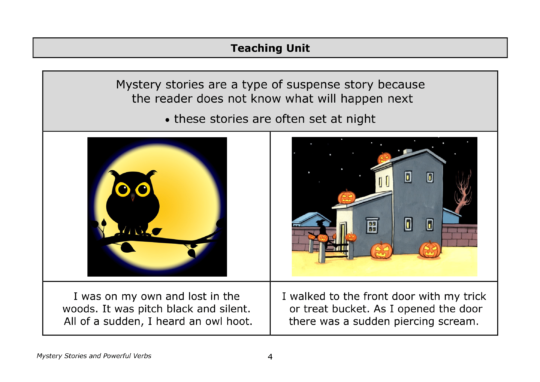

Y6 Mystery Stories and Powerful Verbs
£3.00 Add to basket £3.00Add to basket
£3.00Add to basketKS2 National Curriculum:
✓ Selecting powerful verbs for mood
✓ Identifying main and subordinate clauses
✓ Building sentences that build suspense
✓ Peer assessing writing impactThis lesson focuses on how mystery stories are made interesting by using powerful verbs to describe actions and by using conjunctions to vary the length of sentences. This unit also looks at main and subordinate clauses and subordinating and coordinating conjunctions.
There is a five-minute evidence-based CPD activity at the end of this lesson which will develop classroom teachers’ skill set. This CPD consists of a research extract on independent learning with a five-minute activity based on this extract.
VIEW
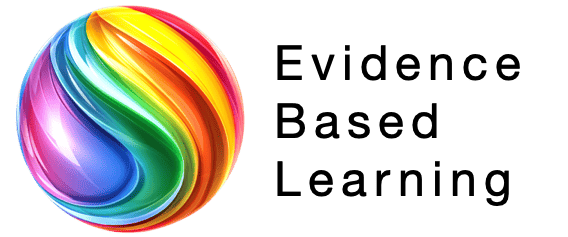

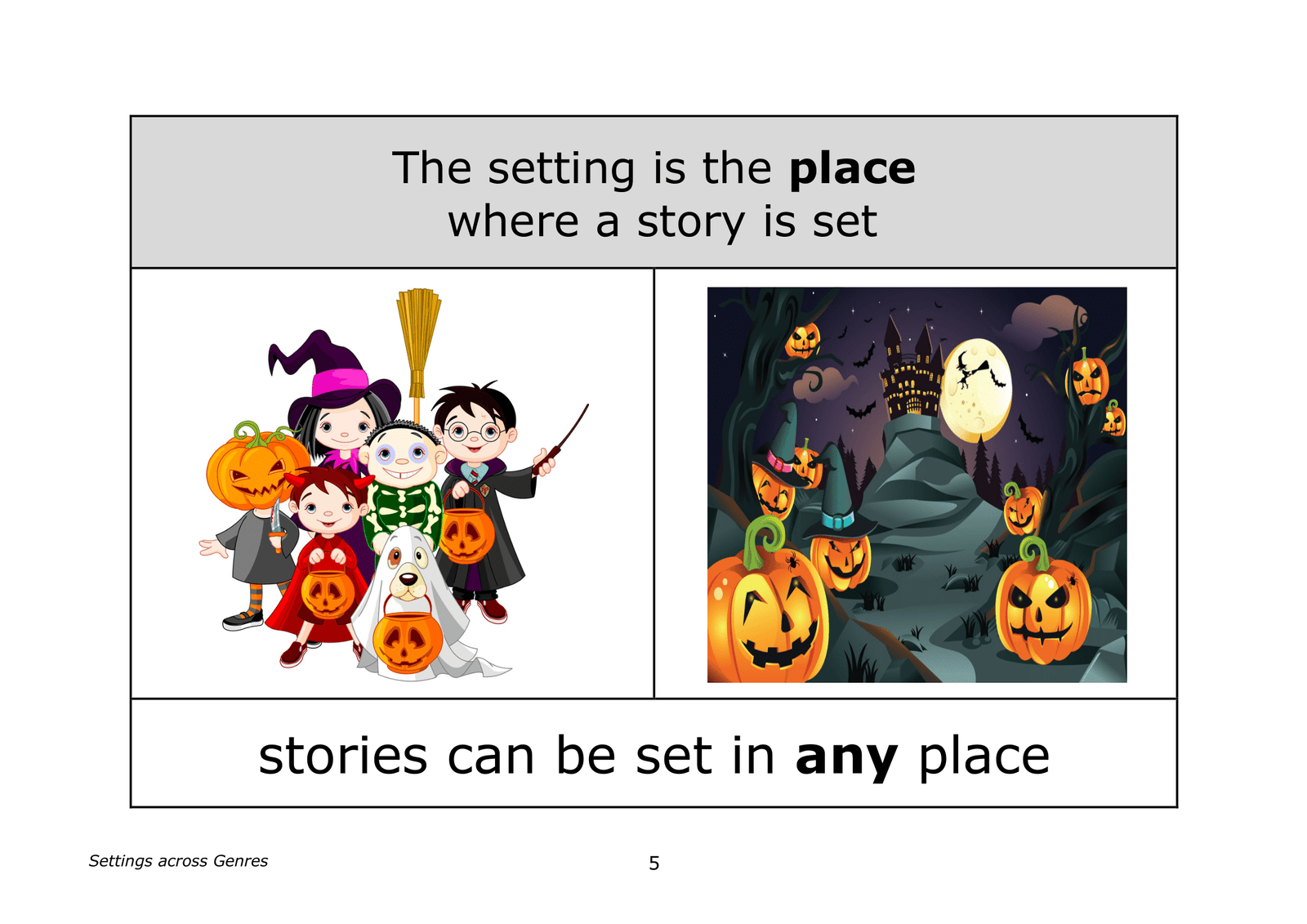
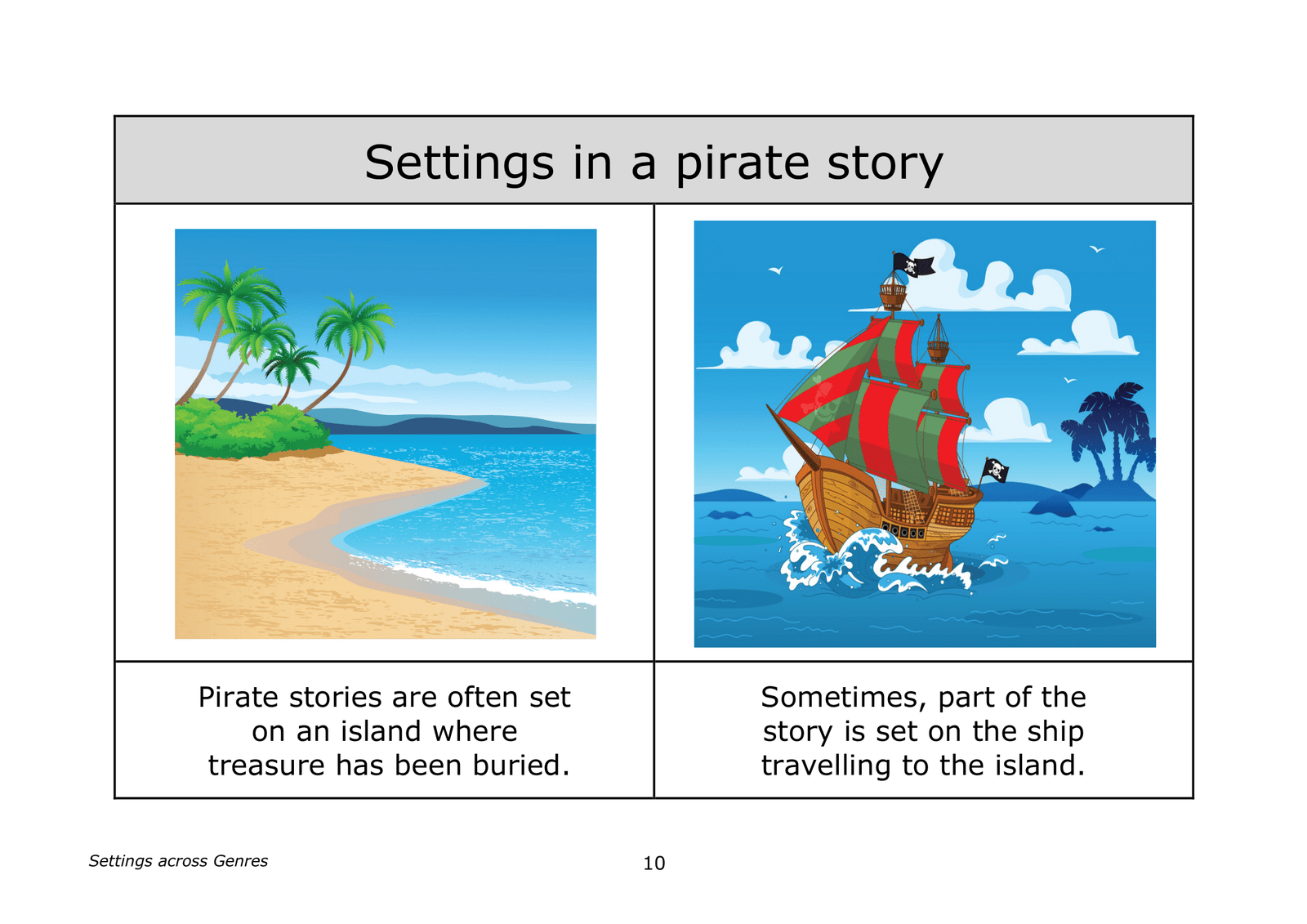


Philipem (verified owner) –
We asked a.i. to review this lesson. This is what it said:
Dive Into Genre Settings with the Engaging “Settings across Genres” Project
★ ★ ★ ★ ★
Looking for a way to explore an important literary element like setting through the lens of different genres? The “Settings across Genres” project from the Familiar Settings unit is an excellent option for upper primary teachers. This fifth lesson in the 11-part unit takes students on an immersive journey through settings in pirate stories, science fiction, traditional tales, and fantasy stories.
Not only does the project deepen students’ comprehension of how setting is used across genres, but it intentionally develops three key evidence-based learning (EBL) skills proven to maximise learning:
1. Independent learning – Activities get students seeking out new knowledge autonomously.
2. Thinking skills – Questions and discussions build higher/lower order thinking abilities.
3. Self-regulation – Reflective exercises promote productive learning behaviours.
A guided analysis walks students through typical settings and elements of each genre, requiring them to make insightful connections. They compare real vs. imaginary settings, recognise the need for more description with fantasy elements, and identify how setting shifts due to character movements, time changes, etc.
The independent activities throughout provide ample opportunities for students to solidify their understandings, explain concepts in their own words, take notes, and share ideas. A focused self-regulation component has students reflect on which exercises helped their learning most and why – building crucial metacognitive skills.
As an added bonus, the lesson includes a 5-minute teacher CPD (continuing professional development) segment focused on the research behind self-regulated learning. It demonstrates how this EBL skill increases student independence, achievement, and control over their own learning progress.
With its immersive genre exploration, integration of EBL skills like independent learning and self-regulation, and teacher professional development, the “Settings across Genres” project is an absolute winner. It delivers a rich, evidence-based learning experience related to the key literacy element of setting across different text types.
I give this resource a well-deserved ⭐⭐⭐⭐⭐. It’s a highly engaging, multi-genre way to build comprehension skills while intentionally developing crucial cognitive abilities – definitely worth adding to your year 5 or 6 teaching plans.